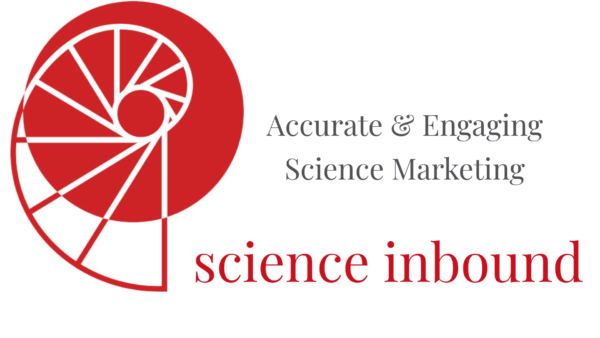Why storytelling is the science communication tool biotech founders can’t ignore

Breakthrough science doesn’t guarantee funding. That’s a hard truth biotech founders know too well. You can have a technology that changes diagnostics or accelerates treatment pipelines, and still walk out of a pitch meeting with nothing but polite nods.
It’s not the science that fails. It’s the story.
Many founders default to sharing more data, more slides, more acronyms. However, most investors aren’t scientists (and even if they are, they likely don’t specialize in the rare disease you study or a novel next-generation sequencing protocol). They don´t want to decode your experimental setup. They want to understand the impact of your discovery.
Here’s where storytelling comes in – not as a performance, but as a framing tool that makes your science easier to grasp.
What does it mean to communicate your science effectively and without compromising accuracy? That’s what this post explores.
The science-investor disconnect
Most investors are sharp, strategic thinkers. However, even those with a science background may not necessarily have experience in your specific area, such as immunotherapy resistance pathways or sample preparation for cell-free DNA assays.
Yet, many founders understandably focus on aspects they know best: technical validation, statistical rigor, and experimental depth. And while they matter, this approach can quickly overwhelm. Investors need a clear throughline – problem, solution, outcome – not a narrated lab notebook.
Here’s the disconnect: you’re telling the whole story. They just want the part that helps them say “yes.”
And that’s not about dumbing it down. It’s about knowing which details matter to this audience, right now.
What science communication actually means
Let’s clear up a misconception: science communication isn’t about simplifying your work until it sounds like marketing fluff. It’s about translating scientific data into something someone outside your specialty can engage with, without losing the signal in the noise.
I often ask clients to describe their technology and its impact, like they would to a friend at a party. What are the basic things they need to mention to explain why they get up in the morning, and what impact they see in their work?
And it’s guaranteed that they won’t start with “You know, we have identified protein X as a key regulator of transcription factor Y, and now we are developing an antibody-drug conjugate to reduce levels of protein X”. Instead, they will say: “There’s this rare disease that affects small children, and we are trying to find a cure.”
Certainly, the communication to investors must be tailored to something in between these two extremes, or rather, it will contain a mixture of both. If you are developing laboratory equipment, you may reframe a technical automation feature as “cutting turnaround from one working day to twenty minutes.”
And yes, there’s risk: misrepresenting, over-promising, flattening nuance. But the greater risk – especially for startups – is failing to be understood at all.
When done well, science communication doesn’t reduce your message. It sharpens it.
Why storytelling works – and neuroscience proves it
Let’s zoom out: why does storytelling work?
Because humans are wired to process narrative, and our brains love stories – a long history of books and movies, and the success of streaming platforms is proof of that.
And we don’t just hear stories – we simulate them. Neuroscience studies show that listening to stories activates the same brain regions involved in memory, emotion, and decision-making. And that activation improves recall, trust, and motivation to act – including the financial decisions we make.
Now, apply that to biotech. Imagine a pitch that doesn’t just report clinical endpoints but frames them through a patient timeline. Or one that doesn’t list platform features, but opens with a diagnostic bottleneck and ends with a transformed workflow.
That’s technical storytelling – data in a sequence that our brains are built to follow.
Still a scientist, now a storyteller
Let’s address the elephant in the room: many scientists worry that storytelling means sacrificing accuracy. That “selling” the story undermines the science.
That fear is valid – and healthy.
But here’s the thing: you’re not cutting corners. You’re cutting clutter. And, just as importantly, you’re adding back the context that’s often assumed but rarely explained.
What seems obvious to you – why this mutation matters, or how this assay integrates into a diagnostic pathway – might not register for someone hearing it for the first time. They don’t lack intelligence. They lack prior knowledge.
So your job isn’t to simplify. Instead, you clarify. You are presenting the information in a way that exactly meets the person’s needs.
Science communication isn’t just for investors
Investor conversations may be your immediate focus – but the need for clear, grounded science communication extends far beyond the boardroom. Public health campaigns, such as vaccine programs, hinge on the same thing: whether people understand and trust the science behind them.
Facts are not self-explanatory. And in an age of misinformation, clarity isn’t optional – it’s foundational.
So the tools you build to pitch your company? They also equip you to engage the public, advocate for funding, and position your technology within a broader conversation. Because the societal impact of science starts with what people believe.
Start with these four story moves
So how do you begin?
Try these four story moves – not scripts, but flexible structures that help your message land:
- Frame the unmet need first.
What problem are you solving? What happens if no one solves it? - Explain your technology in plain terms.
Use metaphors, visuals, analogies – anything that turns unfamiliar processes into relatable concepts. Well-known examples include addressing mitochondria as the “cell powerhouse” or DNA as a book, and epigenetic modifications as bookmarks. - Anchor data to human consequence.
Numbers are only powerful when we see what they mean in real life: faster results, better patient outcomes. - End with a clear future state.
Show what the world looks like if your technology is adopted. Don´t talk in abstract terms, but give a concrete vision.
These aren’t shortcuts. They’re scaffolds. And they work – because they respect your science and your audience.
Conclusion: from facts to funding (and beyond)
You don’t need to become a full-time science communicator to tell your story well. You just need to recognize that storytelling is part of your job – because a breakthrough technology isn’t enough if no one understands it.
Whether you’re raising capital or speaking at a conference, your success depends on more than the quality of your data. It depends on the clarity of your narrative.
At Science Inbound, we specialize in helping biotech teams turn complexity into clarity – without compromising scientific accuracy. We believe that stories about successful research should be both in-depth and well-directed.
Need help making your biotech story clear and compelling? Get in touch – we’d love to support you.
Image: Alexia Rodriquez on Unsplash
- Using AI for biotech and scientific translation – with human precision - November 11, 2025
- AI in science communication: help or hype? - October 6, 2025
- How an outside look can help you develop a better biotech USP - August 4, 2025
